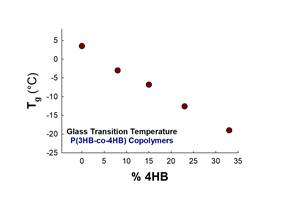New High-Performance Nylons For Automotive, Electronics, Packaging
Nylon producer Ems-Grivory America in Sumter, S.C., is reaching beyond its traditional product range to bring out new partially aromatic nylons that bridge the gap between standard engineering thermoplastics and high-performance specialty polymers.
Nylon producer Ems-Grivory America in Sumter, S.C., is reaching beyond its traditional product range to bring out new partially aromatic nylons that bridge the gap between standard engineering thermoplastics and high-performance specialty polymers. The company is also looking to expand beyond nylon through a technical alliance, acquisition, or joint venture.
"We're a nylon house, but we're looking to diversify our activities," says Guido Hobi, president of the U.S. branch of the Swiss-based firm. "We're willing to consider all opportunities and material segments that will complement our ┤¾¤¾┤½├¢."
Aiming for the higher end
Hobi adds that Ems-Grivory is moving away from the nylon 6 and 66 compounding ┤¾¤¾┤½├¢, which is increasingly serviced by toll compounders who utilize recycled materials and sell on price. "We don't see a niche in that market. We're not a low-cost compounder," Hobi notes. His strategy is to compete with materials at the upper end of the product spectrum—such as PEEK, polysulfone, LCP, and polyimide—in applications that are over-engineered.
Ems-Grivory is also boosting its manufacturing base. The company has started a debottlenecking project that will add 4.4 million lb/yr of resin capacity at its Sumter plant. This will meet increased demand for nylon barrier materials in flexible and rigid packaging. In addition, the firm plans to add another compounding line in the next two or three years to meet anticipated demand for another 4.4 million to 6.6 million lb/yr. A new technical service facility for molding and extrusion customers is expected to open this year, staffed by additional tech service employees.
Partially aromatic nylons
One new focus for the company is partially aromatic nylons that exceed the performance of aliphatic nylon 6 and 66. Trade-named Grivory, these semi-crystalline resins are made from hexamethylene diamine and aromatic acids such as terephthalic or isophthalic acid. These resins are virtually unaffected by moisture (unusual for nylon) and boast high barrier properties for multi-layer packaging, high stiffness for metal replacement, and high heat resistance for electronic connectors and under-hood uses.
The first product in this series is new Grivory G4V, a stiff, high-flow grade that provides outstanding surface appearance. The patented nylon polymer is based on 6I/6T chemistry (using a mix of isophthalic and terephthalic acids) and 20% to 60% glass. It competes with reinforced MXD6 nylons such as Mitsubishi's Reny and Solvay Advanced Materials' Ixef. Applications include office furniture and auto interior and exterior components.
G4V's high flow permits filling complex thin-wall parts. A 50% glass-filled version boasts a spiral flow of 450 mm vs. 325 mm for similarly reinforced MXD6 nylon. Molders can also achieve a better surface gloss at a lower tool temperature with G4V, the company says. At a mold temperature of 176 F, 50% glass-filled G4V exhibits 70% gloss vs. 30% gloss for MXD6. G4V is also said to provide better impact strength.
Other new partially aromatic nylons are a uv-stabilized grade and a flame-retardant version of high-temperature PPA (polyphthalamide, a family that includes DuPont's Zytel HTN and Solvay's Amodel). Grivory XE 3876 is a 30% glass-reinforced 6T/66 copolymer with no halogen or red phosphorus. It is aimed at lead-free soldering of electronic assemblies. The company is also exploring other flame-retardant PPA grades with high levels of glass reinforcement.
UV-stabilized Grivory GV-5HL is a 50% glass-reinforced 6I/6T copolymer that is weatherable and keeps its gloss outdoors. Targets include telecommunications control housings and lawn/garden products.
New barrier solutions
Another key growth area is barrier packaging, where Ems-Grivory has an MXD6/MXDI copolymer for coextruded film and stretch-blown multi-layer bottles. For oriented film, the company recently introduced Grivory HB 5299, which has oxygen permeability of 4 cc/m2-day-bar in both low and high humidity and CO2 permeability of 15 cc/m2-day-bar. The material is a potential alternative to MXD6 or EVOH. Grivory HB 5299 has a melting point of 220 C (428 F), so it can be coextruded at a lower temperature than MXD6 or other barrier materials. Also, its lower crystallization rate maintains transparency in optical uses and bolsters its orientation. High heat resistance makes it more suitable for sterilizable medical and retort food packaging.
Ems-Grivory also launched Grivory XS05_01 for multilayer PET bottles for carbonated soft drinks and juices. It has the same barrier performance as HB 5299 and less delamination tendency due to its lower crystallization rate. XS05 _01 also maintains transparency at high humidity.
Transparency is big draw
Ems-Grivory also makes nylon 12, which is making headway in transparent applications, particularly ophthalmic lenses. A new grade, Grilamid TR XE3805, is replacing polycarbonate in non-corrective lenses. Amorphous nylon 12T reportedly doesn't stress-crack like PC when lenses are mounted with screws. Development work is also focused on nylon 12 grades for gas pipe.
In automotive, Ems-Grivory patented a design for an air-charge duct for the diesel-powered Mercedes A Class. The extrusion blow molded duct has a hard section made of Grilon EB50H nylon 6 and a soft section of Grilon ELX50HNZ nylon elastomer. The three-part design, called Moax, is an alternative to conventional aluminum/thermoset rubber constructions that have up to seven parts. The all-nylon design controls the expansion and shape of the duct in response to heat and pressure. The design incorporates engineered flat segments that expand in certain directions, providing an optimum balance of flexibility and stiffness.
Related Content
Shredding Thin Film: How to Do It Right
While many processors recoil at this task, a little know-how in shredding equipment, processing, and maintenance should add the necessary confidence.
Read MoreBreaking the Barrier: An Emerging Force in 9-Layer Film Packaging
Hamilton Plastics taps into its 30-plus years of know-how in high-barrier films by bringing novel, custom-engineered, nine-layer structures resulting from the investment in two new lines.
Read MoreBreaking News From NPE2024
Here is a firsthand report of news in injection molding, extrusion, blow molding and recycling not previously covered.
Read MoreFilm Extrusion: Boost Mechanical Properties and Rate of Composting by Blending Amorphous PHA into PLA
A unique amorphous PHA has been shown to enhance the mechanical performance and accelerate the biodegradation of other compostable polymers PLA in blown film.
Read MoreRead Next
People 4.0 – How to Get Buy-In from Your Staff for Industry 4.0 Systems
Implementing a production monitoring system as the foundation of a ‘smart factory’ is about integrating people with new technology as much as it is about integrating machines and computers. Here are tips from a company that has gone through the process.
Read MoreSee Recyclers Close the Loop on Trade Show Production Scrap at NPE2024
A collaboration between show organizer PLASTICS, recycler CPR and size reduction experts WEIMA and Conair recovered and recycled all production scrap at NPE2024.
Read More










